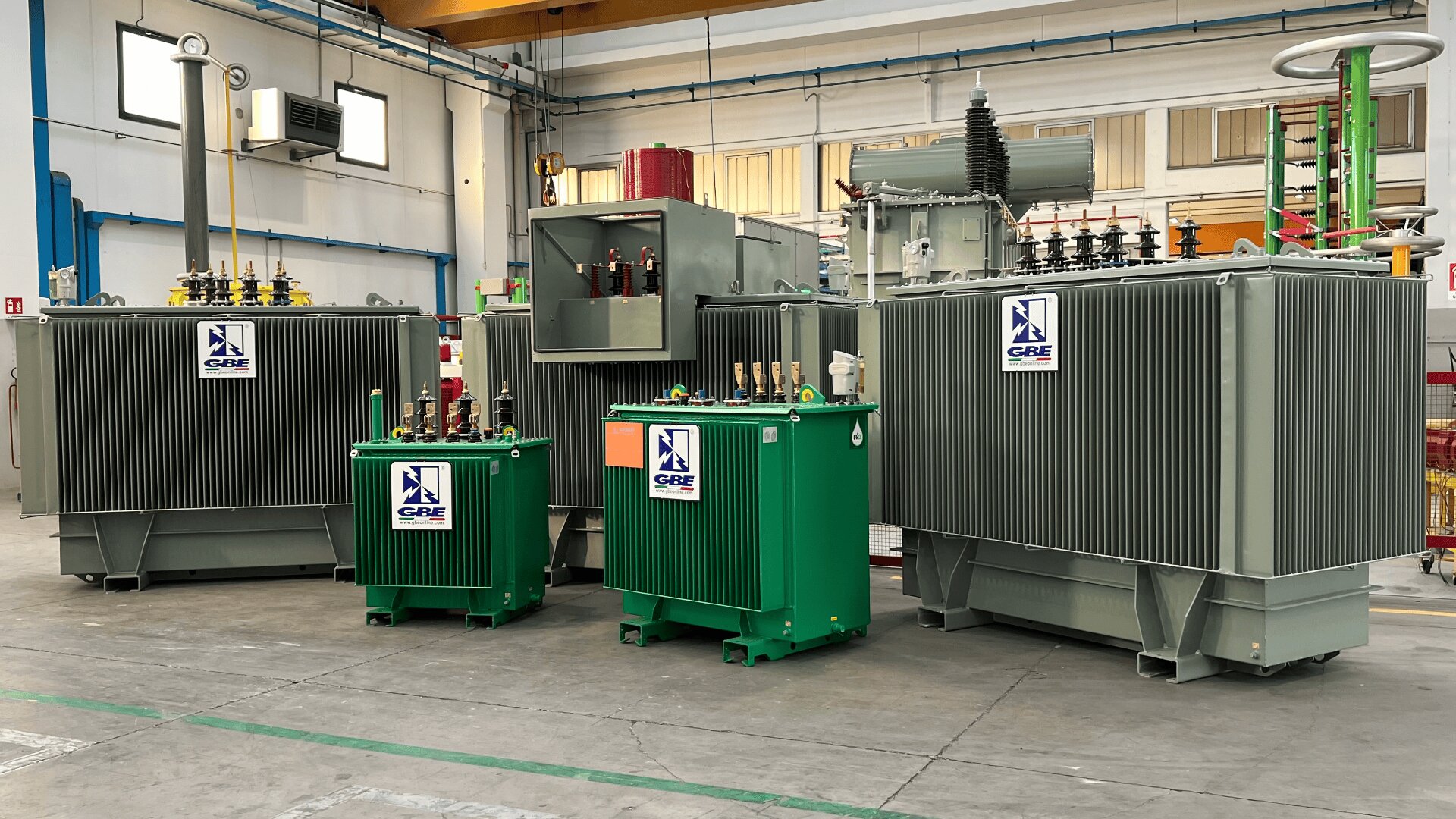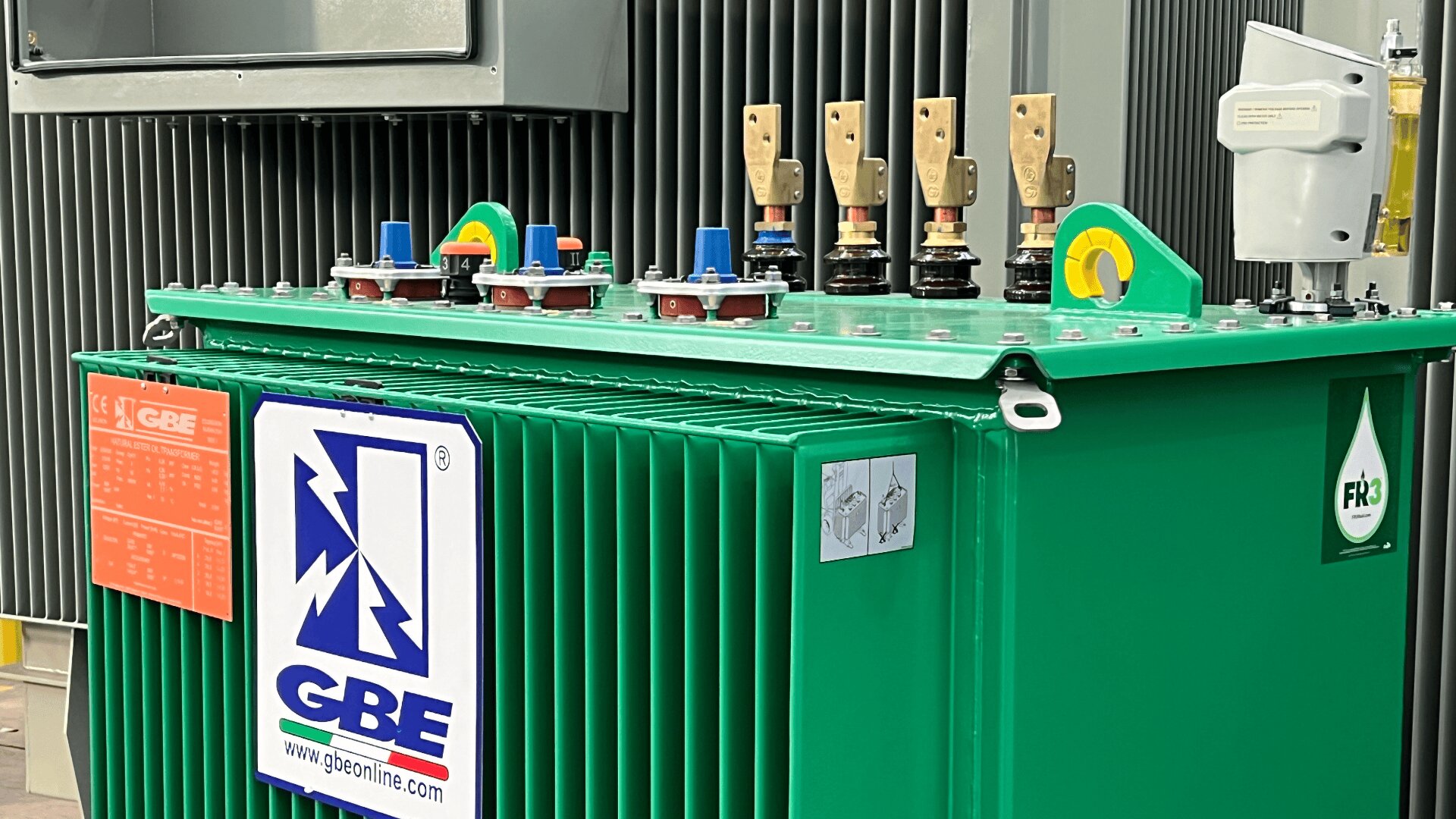Transformers with biodegradable oil — the three new lines fr3 oil immersed: KNAN, SLIM and TPL
GBE has studied three new series with FR3 oil, which come at very advantageous prices. Guaranteeing not only low environmental impact levels but also optimising a product for special applications which is superior to a standard product that uses mineral oil.
The considerable increase in energy requirements over the past few years has strongly driven Europe and the world to invest in production plants powered by renewably energy sources, for example solar power, wind power, geothermal power, hydroelectric power, tidal energy and biomass energy. The intention is to stop using conventional energy, which pollutes and is non-renewable, and implement the change towards renewable energy as soon as possible. For this type of renewable energy system, the most suitable transformer is oil immersed, typically installed outdoors or inside prefabricated enclosures where special attention is paid to environmental respect. This is why sensitivity in using biodegradable oils seems to be increasing. Some of these oils, for example FR3, are safer, more sustainable, more reliable and more resilient than the usual mineral oils of the same price.
These bio-based oils are not biodegradable but, being class K2, their Fire and Flash Points are above 300°C. This means that not only can the levels of safety and fire suppression systems be reduced in the installation areas, but because of this they also reduce the distances between one or more transformers installed in the same environment. They are also high viscosity, so in the event of leaks they are not toxic but seep into soil and water very slowly, meaning lower remediation costs if the products spill into the environment.
FR3 oil, for example (98% vegetable), is extremely reliable electrically speaking, as it maintains the original humidity in the insulators used to produce the transformer. The humidity of the paper is removed from the windings through hydrolysis, with one of the benefits being reduced insulating material degradation. After some tests were carried out on the samples that had been temperature cycle tested, the results showed that the average life of the FR3 oil transformer became 5 or 8 times longer than average, therefore less transformer maintenance because the insulating material retains its dielectric capacitance when dry.
From among the incredible advantages of this oil, its temperature class of 140°C certainly cannot be left out. It means that a transformer produced with class A insulating paper can take the transformer hot-spot from 105°C to 120°C and, if the transformer is produced with Temperature Up-Grade Paper (TUP), even up to 140°C with the winding ΔT from the conventional 65° to 95°C.
When FR3 oil is used in transformers, these thermal and electric characteristics make it possible to satisfy different requirements. GBE has studied three new series with FR3 oil which come at very advantageous prices, guaranteeing not only low environmental impact levels but also optimising a product for special applications which is superior to a standard product that uses mineral oil.
The first type of Tier 2 KNAN transformer can guarantee an overload from 25% to 35% without compromising the insulating material or the average transformer lifespan in any way. This line, which replaces the classic ONAF, does not have rotating parts that require continual, short-term maintenance.
A second type of transformer called SLIM, which is always produced according to the Eco directive and is for powers above 2000 kVA, is lighter and smaller by at least one rating. With the same losses, and as such efficiency, this line has a temperature class of 140°C, which is obtained by combining FR3 oil with Up-Grade insulating paper.
Finally, for special applications like solar, GBE proposes the TPL (Temporary Peak Load) series. In this case the transformer, with double plate, is rated with a specific Tier 2 nominal power, but a temporary peak power is defined. Transformers produced in this way, when compared with those whose nominal power is the same as the Temporary Peak Load, can have dimensions and weight of even two ratings lower, and in consequence an advantageous price. With solar applications, using this TPL transformer rather than an Eco transformer, whose rating is the same as the peak power, guarantees a much lower yearly energy consumption caused by the core and short-circuit losses.


